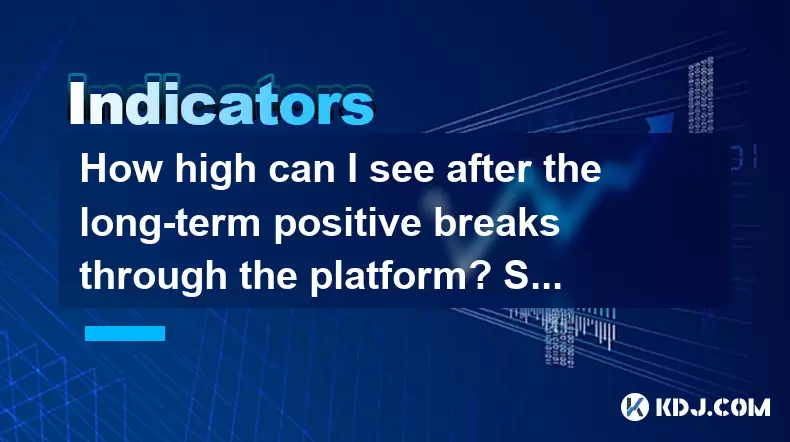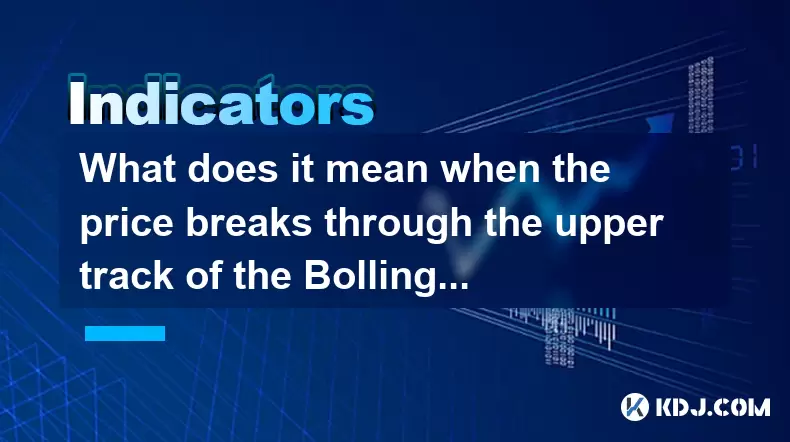-
 Bitcoin
Bitcoin $117500
-0.66% -
 Ethereum
Ethereum $3760
-1.24% -
 XRP
XRP $3.087
-2.54% -
 Tether USDt
Tether USDt $0.9999
-0.01% -
 BNB
BNB $803.6
-4.03% -
 Solana
Solana $180.3
-4.15% -
 USDC
USDC $0.9998
-0.01% -
 Dogecoin
Dogecoin $0.2218
-4.92% -
 TRON
TRON $0.3366
3.71% -
 Cardano
Cardano $0.7785
-3.73% -
 Hyperliquid
Hyperliquid $42.90
-4.75% -
 Sui
Sui $3.797
-7.45% -
 Stellar
Stellar $0.4165
-2.32% -
 Chainlink
Chainlink $17.65
-4.17% -
 Bitcoin Cash
Bitcoin Cash $561.0
-3.86% -
 Hedera
Hedera $0.2611
-4.54% -
 Avalanche
Avalanche $24.33
-7.02% -
 UNUS SED LEO
UNUS SED LEO $8.972
0.06% -
 Litecoin
Litecoin $107.6
-2.79% -
 Toncoin
Toncoin $3.254
-1.84% -
 Shiba Inu
Shiba Inu $0.00001306
-4.69% -
 Ethena USDe
Ethena USDe $1.001
0.00% -
 Uniswap
Uniswap $10.10
-4.83% -
 Polkadot
Polkadot $3.902
-4.63% -
 Monero
Monero $315.1
-2.57% -
 Dai
Dai $1.000
0.02% -
 Bitget Token
Bitget Token $4.499
-2.53% -
 Pepe
Pepe $0.00001145
-7.38% -
 Cronos
Cronos $0.1479
6.07% -
 Aave
Aave $281.3
-4.07%
How high can I see after the long-term positive breaks through the platform? Should I add positions?
A long-term positive breakout in crypto signals bullish momentum, often leading to significant price gains when supported by strong fundamentals and high volume.
Jun 18, 2025 at 06:01 pm

Understanding Long-Term Positive Breakthroughs in Cryptocurrency Markets
In cryptocurrency trading, a long-term positive breakthrough typically refers to when an asset's price moves beyond a previously established resistance level on high volume and sustained momentum. This kind of movement often signals a shift in market sentiment from bearish to bullish over an extended period.
When such a breakout occurs, traders and investors may wonder how far the price could potentially rise. Historically, breakouts that are confirmed by strong fundamentals, increasing adoption, or network upgrades tend to push prices significantly higher than previous consolidation zones. The magnitude of the move can be influenced by factors like market capitalization, trading volume, news cycles, and institutional interest.
It’s important to note that while technical analysis can offer potential targets, the volatility inherent in crypto markets means these levels are not guaranteed.
Identifying Key Resistance and Target Zones Post-Breakout
After a long-term positive breakout, it’s crucial to identify key resistance levels that were previously significant. These levels can serve as potential profit-taking points or areas where the price might face temporary pauses or pullbacks.
One effective method is using Fibonacci extensions. Once a breakout is confirmed, traders often apply Fibonacci retracement tools from major swing lows to swing highs within the prior consolidation range. Extensions at 161.8%, 200%, and 261.8% are commonly watched for possible price reactions.
Another technique involves measuring the height of the consolidation pattern before the breakout and projecting that distance upward from the breakout point. This is known as the measured move strategy, which offers a quantitative estimate of how high the price might go post-breakout.
However, it’s essential to combine these methods with volume analysis and moving averages to confirm strength and avoid false projections.
Evaluating the Decision to Add Positions After a Breakout
The question of whether to add positions after a breakout is one of the most debated topics among traders. While some advocate for entering aggressively during the initial breakout phase, others prefer waiting for confirmation through retests or pullbacks.
If you're considering adding positions, start by assessing your initial entry point and the size of your existing position. If you entered early during the breakout and the price continues to rise without pulling back, scaling in gradually can help manage risk. One way to do this is by using trailing stops to protect gains while allowing room for further upside.
Before adding any new position, ensure that the broader market conditions remain favorable. Check if other major cryptocurrencies are also showing strength and if there are no negative macroeconomic developments that could impact investor sentiment.
Also, consider the on-chain metrics—such as exchange inflows/outflows, whale accumulation patterns, and hash rate trends—to gauge underlying demand and network health.
Technical Indicators That Confirm Post-Breakout Strength
To validate the sustainability of a breakout, traders rely on several technical indicators:
- The Relative Strength Index (RSI) should ideally remain above 50 but not spike too far into overbought territory unless the rally is particularly strong.
- The Moving Average Convergence Divergence (MACD) should show a crossover above the signal line, along with increasing histogram bars, indicating growing momentum.
- Volume plays a critical role; sustained rallies usually come with consistent volume increases. A sudden drop in volume during an uptrend can signal weakness.
Additionally, monitoring on-balance volume (OBV) helps determine whether institutional buyers are accumulating the asset quietly. A rising OBV confirms buying pressure, while a falling OBV suggests distribution.
Using multiple timeframes—like checking daily and weekly charts—can provide a clearer picture of whether the breakout is part of a larger trend or just a short-lived pump.
Risk Management Considerations When Holding or Adding Positions
Adding positions after a breakout carries increased risk, especially in highly volatile markets like cryptocurrency. Therefore, implementing strict risk management protocols becomes essential.
Set clear stop-loss levels based on recent swing lows or key support zones. For example, placing a stop just below a major moving average, such as the 50-day EMA, can help limit downside exposure without being prematurely stopped out due to normal price fluctuations.
Position sizing is another crucial factor. Avoid allocating more than a predetermined percentage of your portfolio to a single trade. Some traders use the 2% rule, where no more than 2% of total capital is risked on a single trade.
Also, consider using partial profit-taking strategies—selling a portion of your holdings at Fibonacci extension levels or historical resistance zones to lock in gains while keeping the rest for potential further upside.
Frequently Asked Questions (FAQs)
Q: How do I differentiate between a genuine breakout and a false one?
A: A genuine breakout is typically accompanied by a surge in volume, follows a clear consolidation pattern, and sustains above the resistance level for multiple candlesticks. False breakouts often occur on low volume and quickly retreat below the breakout zone.
Q: Should I always wait for a retest before adding to my position?
A: Not necessarily. While retests offer safer entry points, strong breakouts with high volume and momentum may not retrace. Traders must balance the risk of missing out with the possibility of entering too late.
Q: Can fundamental analysis override technical signals post-breakout?
A: Yes. Strong fundamentals, such as protocol upgrades, partnerships, or regulatory clarity, can sustain a breakout even if technical indicators suggest overbought conditions.
Q: What role does trader psychology play after a long-term positive breakout?
A: Trader psychology heavily influences price action. Greed can drive prices beyond rational levels, while fear can trigger sharp corrections. Monitoring sentiment indicators like the Crypto Fear & Greed Index can provide insights into crowd behavior.
Disclaimer:info@kdj.com
The information provided is not trading advice. kdj.com does not assume any responsibility for any investments made based on the information provided in this article. Cryptocurrencies are highly volatile and it is highly recommended that you invest with caution after thorough research!
If you believe that the content used on this website infringes your copyright, please contact us immediately (info@kdj.com) and we will delete it promptly.
- Whale Activity, Altcoins, and Market Cooldown: What's the Deal?
- 2025-07-30 04:50:13
- Crypto Presale Buzz: Experts Eye Binance Coin's Staying Power and New Contenders
- 2025-07-30 04:50:13
- BlockDAG Builders Surge Past 4,500 Amidst Presale Hype
- 2025-07-30 05:30:13
- BlockDAG's Run Outpaces Meme Buzz: Little Pepe's Fading Frog
- 2025-07-30 05:30:13
- Ruvi AI: Analyst Favorite and Token Gainer Poised for Massive ROI?
- 2025-07-30 05:35:12
- Algorand, Remittix, and Gains: What's Hot in the Crypto Space?
- 2025-07-30 05:35:12
Related knowledge

What does it mean when the EMA combination crosses upward for the first time after sideways trading?
Jul 28,2025 at 03:43pm
Understanding the EMA and Its Role in Technical AnalysisThe Exponential Moving Average (EMA) is a widely used technical indicator in cryptocurrency tr...

What does it mean when the price breaks through the upper track of the Bollinger Band but the RSI is overbought?
Jul 30,2025 at 03:35am
Understanding Bollinger Bands and Their Upper TrackBollinger Bands are a widely used technical analysis tool developed by John Bollinger. They consist...

What signal does the ROC send when it rises rapidly from a low level and breaks through the zero axis?
Jul 27,2025 at 10:15am
Understanding the Rate of Change (ROC) IndicatorThe Rate of Change (ROC) is a momentum-based oscillator used in technical analysis to measure the perc...

What does it mean when the moving averages are glued together and a gap appears?
Jul 29,2025 at 07:49pm
Understanding Moving Averages in Cryptocurrency TradingMoving averages are among the most widely used technical indicators in the cryptocurrency tradi...

What does it mean when TEMA breaks through the long-term downward trend line?
Jul 29,2025 at 02:50pm
Understanding the Role of Smart Contracts in Decentralized Finance (DeFi)Smart contracts are self-executing agreements with the terms of the agreement...

What does it mean when the price breaks through the double bottom neckline and the moving averages are arranged in a bullish pattern?
Jul 28,2025 at 10:57am
Understanding the Double Bottom PatternThe double bottom is a widely recognized reversal chart pattern in technical analysis, particularly within the ...

What does it mean when the EMA combination crosses upward for the first time after sideways trading?
Jul 28,2025 at 03:43pm
Understanding the EMA and Its Role in Technical AnalysisThe Exponential Moving Average (EMA) is a widely used technical indicator in cryptocurrency tr...

What does it mean when the price breaks through the upper track of the Bollinger Band but the RSI is overbought?
Jul 30,2025 at 03:35am
Understanding Bollinger Bands and Their Upper TrackBollinger Bands are a widely used technical analysis tool developed by John Bollinger. They consist...

What signal does the ROC send when it rises rapidly from a low level and breaks through the zero axis?
Jul 27,2025 at 10:15am
Understanding the Rate of Change (ROC) IndicatorThe Rate of Change (ROC) is a momentum-based oscillator used in technical analysis to measure the perc...

What does it mean when the moving averages are glued together and a gap appears?
Jul 29,2025 at 07:49pm
Understanding Moving Averages in Cryptocurrency TradingMoving averages are among the most widely used technical indicators in the cryptocurrency tradi...

What does it mean when TEMA breaks through the long-term downward trend line?
Jul 29,2025 at 02:50pm
Understanding the Role of Smart Contracts in Decentralized Finance (DeFi)Smart contracts are self-executing agreements with the terms of the agreement...

What does it mean when the price breaks through the double bottom neckline and the moving averages are arranged in a bullish pattern?
Jul 28,2025 at 10:57am
Understanding the Double Bottom PatternThe double bottom is a widely recognized reversal chart pattern in technical analysis, particularly within the ...
See all articles

























































































